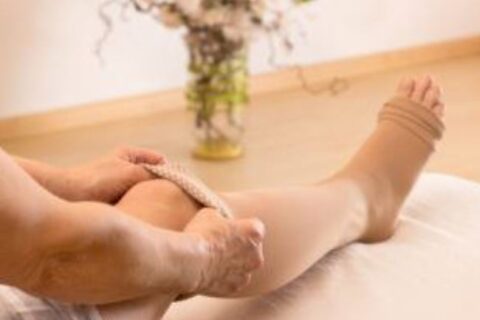Venous Insufficiency: An Overview of Causes, Symptoms, and Therapeutic Approaches
Chronic venous insufficiency (CVI) is a medical condition that often flies under the radar, but its impact on health and day-to-day comfort can be significant. With the hustle of modern life, the health of our veins may not be at the forefront of our concerns. However, understanding CVI is critical, as it can lead to more serious complications if left unchecked. Arizona Vein and Laser Institute is committed to delivering cutting-edge treatments for venous insufficiency, addressing the condition from all angles, so our customers are empowered with knowledge treated with the best care.
Understanding Venous Insufficiency
Venous insufficiency refers to a condition where the veins have trouble sending blood from the legs back to the heart. When we walk or move, our calf muscles naturally help pump the blood upwards, against gravity. In healthy veins, a series of one-way valves opens as blood flows toward the heart and then closes to prevent backflow. When these valves do not work properly, blood can collect in the legs, resulting in various symptoms and visible varicose veins.
Understanding this condition is more than identifying symptoms–it’s about recognizing the importance of venous health for our overall well-being. Many relate venous insufficiency solely to cosmetic concerns, yet the condition, if left untreated, can cause severe complications such as ulcers and deep vein thrombosis (DVT).
The Roots of Venous Insufficiency
To grasp the causes of venous insufficiency, one must understand the infrastructure of our amazing vascular system. This condition can be rooted in a combination of genetic factors, lifestyle choices, and medical histories that can compromise our venous wellbeing.
Genetics
Family lineage can play a significant role in venous health. If you have family members who have venous issues, your risk may be higher due to inherited weaknesses in the vein walls or valves.
Lifestyle Factors
Our daily activities can affect the pressure in our veins. Those whose occupations require prolonged standing or sitting may be at higher risk of venous insufficiency. Additionally, factors like obesity and a lack of regular physical activity can exacerbate the issue.
Medical Conditions
Certain medical conditions can contribute to venous insufficiency. Hormonal changes, such as those during pregnancy or menopause, can relax vein walls. Previous blood clots, known as deep vein thrombosis, can also damage valves, impeding blood flow, and cause venous insufficiency.
Symptoms of Venous Insufficiency
Venous insufficiency, though manifesting itself through various symptoms, is not always immediately evident to the untrained eye. If left untreated, the condition could progress to chronic venous hypertension and possibly result in tissue damage and ulceration.
Varicose Veins
Perhaps the most visible sign of venous insufficiency, varicose veins appear as enlarged, twisted veins near the surface of the skin. They’re often blue or dark purple and might look otherworldly under the Arizona sun, a signal indicating an issue with the deeper venous system.
Leg Swelling
If your legs swell at the end of the day, it could be more than just the result of hours spent sitting or standing. Swelling, also known as edema, is often an early sign of venous insufficiency and occurs when fluid accumulates in the tissues due to poor circulation.
Skin Changes
Venous insufficiency can cause changes in the skin, including dryness, itchiness, and a brownish discoloration. Over time, these changes can trigger more severe conditions such as venous eczema, lipodermatosclerosis, and venous ulcers.
Therapeutic Approaches to Tackle Venous Insufficiency
Fortunately, the treatment landscape for venous insufficiency has expanded well beyond the conventional “just live with it” rhetoric. Modern medicine offers a range of intervention options aimed at alleviating symptoms, improving venous function, and enhancing the overall quality of life for those affected by this condition.
Compression Therapy
Wearing compression stockings is often the first-line defense against venous insufficiency. These specially designed stockings apply pressure to the legs, promoting blood flow back to the heart and preventing the accumulation of fluid that leads to swelling.
Sclerotherapy
Sclerotherapy is a minimally invasive procedure where a special solution is injected into the affected veins, causing them to collapse and eventually fade away. It’s an effective treatment for both the symptoms and the appearance of varicose veins.
Endovenous Ablation
Endovenous ablation is a newer, more advanced technique used to treat venous insufficiency. It involves using heat (radiofrequency or laser) to seal the problematic veins, rerouting blood flow to healthier vessels.
Arizona Vein and Laser Institute: Pioneering Care for Venous Health
At Arizona Vein and Laser Institute, our mission is to provide the highest quality care for venous disorders. We employ a team of expert vascular specialists who are dedicated to staying current with the latest research and technology to offer our patients the best treatment options available.
Specialized Treatments
We understand that each patient is unique, and so is their venous insufficiency. We design our treatments to address individual needs, combining our expertise with state-of-the-art equipment to achieve optimal results.
The Importance of Proactivity in Vascular Health
Venous insufficiency is a prevalent condition that can cause discomfort, reduce mobility, and affect the quality of life. It’s important to recognize the symptoms and seek professional advice.
We encourage you to take the first step towards healthier veins by reaching out to Arizona Vein and Laser Institute. Our friendly team is ready to guide you through the process, schedule a consultation, and discuss the best options for your venous health.
Don’t wait until varicose veins are mistaken for Arizona’s topographical map or the slightest swelling makes life’s simplest pleasures a burden. Empower yourself with the knowledge and treatment you deserve.
To learn more about managing venous insufficiency or to schedule your consultation, visit Arizona Vein and Laser Institute’s website or call 602-298-8346. With six locations across Arizona, we’re committed to helping you reclaim your venous vitality.


